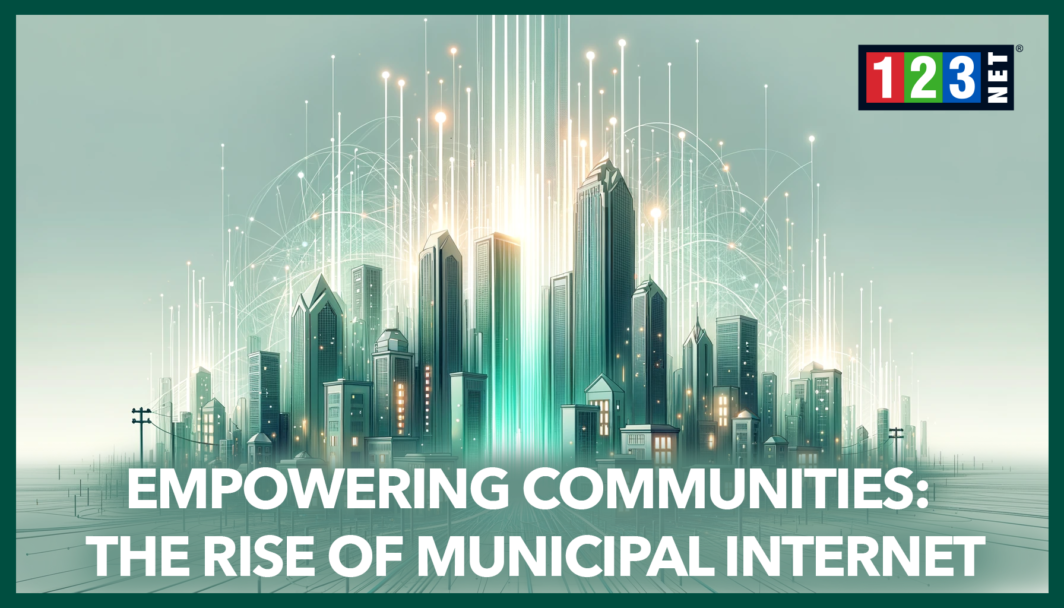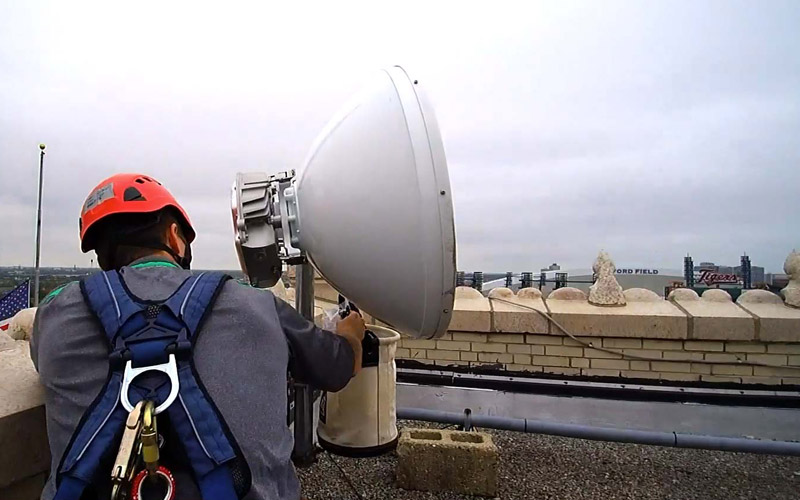
Introduction
Municipal internet, delivered through city-owned networks, provides a vital alternative to private ISPs, promoting public internet access and digital equity. Operated by local governments, these networks aim to offer affordable, high-speed internet services that prioritize community needs over profit. This approach has gained traction across the U.S., where there’s a growing movement towards adopting municipal broadband. This shift is largely driven by the public’s increasing demand for reliable and economically accessible internet solutions. By focusing on the community’s best interests, municipal internet presents a promising path towards greater digital inclusivity and enhanced connectivity.
Background and Current State of Municipal Internet
Emergence of Municipal Broadband
The concept of municipal broadband took root as communities began to desire greater autonomy over their internet infrastructure. This shift aimed to guarantee wider and more dependable access to high-speed internet. Historically, these initiatives were driven by the need to bridge the digital divide and provide all community members with reliable internet connectivity. This is increasingly seen as a fundamental service.
Current Landscape of Municipal Broadband
In recent years, municipal broadband has shown impressive growth. With cities taking charge of their broadband services, there has been a noticeable improvement in network capabilities and an expansion in coverage areas. The data from 2022 illustrates a significant advancement in the reach of these networks. It is highlighting how numerous communities have successfully implemented their own broadband services.
Success of Community Broadband Models
Municipal networks have proven to be effective in various regions, serving as models of successful community broadband implementations. These networks, managed by city entities, emphasize quality service and customer satisfaction. The success is measurable in terms of increased subscriber numbers, enhanced speed offerings, and improved service reliability. They also demonstrate how municipally controlled networks can compete favorably with traditional ISPs. It is providing a blueprint for other cities contemplating the establishment of their own broadband services.
In sum, municipal broadband has evolved from a niche alternative to a substantial contributor to the nation’s broadband ecosystem. It is showing marked growth in both infrastructure development and user adoption. This evolution points to a promising future where more communities can control their internet services. It is ensuring high-quality, equitable internet access for all residents.
Advantages of Municipal Internet
Superior Speed and Reliability of Municipal Internet
Municipal broadband networks frequently surpass private ISPs in both speed and reliability, leveraging high-performance fiber-optic technology to deliver superior internet services. These networks utilize state-of-the-art infrastructure designed to handle large volumes of data with minimal latency. It is offering both residents and businesses a more reliable and faster internet connection. This technological edge is critical, especially in today’s digital landscape where speed and uptime are crucial for everything from telecommuting and online education to streaming and gaming.
Economic Benefits of Municipal Broadband
Municipal networks not only provide exceptional service but also offer significant economic advantages. These networks often see strong returns on investment due to their efficient service models and the attraction of new businesses looking for reliable connectivity. Moreover, the presence of a municipal broadband service can increase property values within the community and stimulate local economies by supporting small businesses and startups. The financial sustainability of these networks, coupled with their ability to reinvest profits back into community projects, demonstrates a compelling economic model for municipal broadband.
Enhancing Community Welfare Through Digital Equity
One of the most profound impacts of municipal broadband is its contribution to digital equity. By providing high-quality internet access, municipal networks help bridge the digital divide that often exists between different socio-economic groups within the same community. This accessibility ensures that all residents, regardless of their economic status, have access to essential online services, including educational resources, healthcare information, and employment opportunities. Furthermore, these networks empower communities by allowing local governments to tailor services to meet specific local needs and priorities, thus fostering a sense of local empowerment and participation.

Case Studies of Success Municipal Internet
Examining specific examples, several municipal networks have demonstrated how effectively managed broadband services can lead to successful outcomes. These networks, through their robust fiber-optic services, have not only achieved high levels of customer satisfaction but have also become benchmarks for other cities. Their successes underscore the potential of municipal broadband to transform communities by providing dependable and fast internet services, encouraging economic growth, and promoting equitable access to digital resources.
In conclusion, municipal broadband offers a compelling alternative to traditional ISPs by focusing on superior service quality, economic prosperity, and the enhancement of community well-being. Through their focus on speed, reliability, economic returns, and digital equity, these networks continue to set standards in the telecommunications industry, driving forward the mission of providing universal, high-quality internet access.
Challenges and Controversies
Legal and Regulatory Challenges
Municipal internet initiatives often encounter significant legal and regulatory barriers that can impede their development and deployment. One of the primary obstacles is state preemption laws, which restrict the ability of municipalities to create and operate their own broadband networks. These laws can vary significantly from state to state, with some imposing stringent limitations that effectively make it impossible for cities and towns to enter the broadband market. This regulatory environment can stifle innovation and restrict communities’ access to potentially more reliable and affordable internet services.
Competition and Lobbying Pressures
Another major challenge facing municipal broadband is competition from established major ISPs. These companies often have extensive resources and established infrastructures, which give them a competitive edge. Additionally, major ISPs can engage in aggressive lobbying efforts that influence legislation and public policy in their favor, further disadvantaging municipal projects. This intense competition can deter municipalities from initiating their own internet services, knowing they will have to contend not only with the economic might of these large corporations but also with their political influence.
Technical and Financial Obstacles
Building and maintaining a municipal broadband network involves considerable technical and financial challenges. The initial setup requires significant investment in network technology, including infrastructure development like laying fiber-optic cables and installing related hardware. These costs can be prohibitively high, especially for smaller or financially constrained communities. Beyond the setup, there are ongoing operational costs, which include maintenance, upgrades, and customer service. Securing funding for these ventures is a substantial hurdle, as municipalities must either allocate budget from limited public funds or seek external financing, which itself can be a complex process involving bonds, grants, or private partnerships.
Broadband Competition and Infrastructure Investment
The need for substantial upfront investment is not just a financial challenge—it also entails navigating complex decisions regarding network technology and infrastructure. The choice of technology, network design, and scalability options must all be planned meticulously to ensure that the network can meet current and future demands. Moreover, maintaining competitiveness with private ISPs requires continual upgrades and improvements, adding to the ongoing financial burden on municipal broadband projects.
Future of Municipal Internet
Enhancing Service Levels and Expanding Coverage
Emerging trends in municipal broadband are primarily centered around improving service quality and extending network coverage. This includes upgrading existing infrastructure to support higher data speeds and expanding service to underserved areas. The goal is to provide robust, reliable internet access that can compete with private sector offerings, while addressing the unique needs of each community. Such enhancements not only improve user satisfaction but also help in bridging the digital divide, ensuring that more residents have access to vital online resources for education, work, and entertainment.
The Role of Public-Private Partnerships
Public-private partnerships (PPPs) are becoming a pivotal element of successful municipal broadband projects. These partnerships allow for a blend of municipal oversight and private sector efficiency. It is leveraging the strengths of both to achieve optimal outcomes. Through PPPs, municipalities can benefit from the technical expertise and financial resources of private companies. This is while maintaining control over the broadband service’s alignment with public interests. These collaborations are particularly valuable in complex projects requiring substantial investment and expertise. It is helping to mitigate risks and increase the feasibility of ambitious broadband initiatives.
Impact of Policy Shifts on Municipal Broadband
The expansion and efficacy of municipal broadband can be significantly influenced by changes in federal and state policies. Lawmakers are increasingly recognizing the importance of high-speed internet as a public utility. It is leading to legislative efforts that could either support or restrict the growth of municipal networks. Potential policy shifts might include providing more federal funding for municipal broadband, easing restrictions imposed by state preemption laws, or creating new regulations that level the playing field between municipal and private ISPs. These changes are crucial as they can either propel or impede the progress of municipal broadband. As it is affecting its ability to meet the evolving needs of communities.
FAQs
- What is municipal internet? A: It’s broadband service provided by local government entities.
- How does municipal broadband differ from commercial ISPs? A: It typically focuses on community service rather than profit, often resulting in lower costs and higher speeds.
- What are the typical costs associated with setting up municipal internet? A: Costs can vary widely but include significant investment in infrastructure like fiber-optic cables.
- Can any city establish its own broadband network? A: While technically possible, legal and regulatory frameworks in some states can make it challenging.




